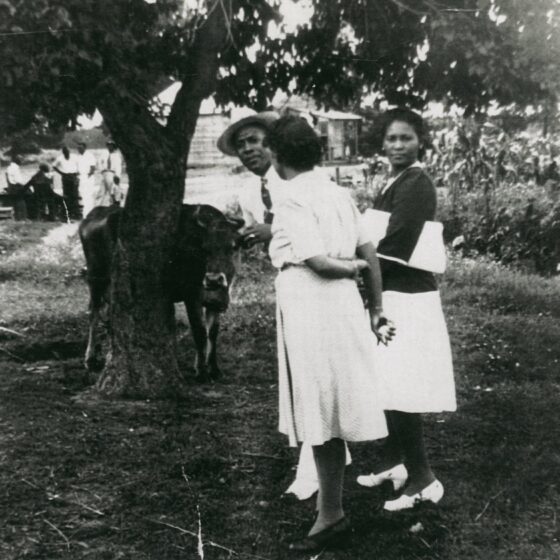The Origins of the R.J. Reynolds Tobacco Company
The R.J. Reynolds Tobacco Company was the fourth tobacco manufacturer to arrive in Winston, but it soon outpaced and bought out the competition. Reynolds’s success caught the eye of James B. Duke, whose American Tobacco Trust, the third-largest corporation in America, absorbed Reynolds in 1899.
Reynolds maintained independence under Duke’s benign dictatorship, so long as he stayed out of the cigarette business. Ambitious marketing campaigns led to a fourfold increase in sales of brands of chewing and plug tobacco and—most successfully—Prince Albert smoking tobacco, the first truly national tobacco brand.
Never one to shrink from a high-stakes venture, Reynolds invested much of his company’s profits in the 1913 launch of the company’s first cigarette, the Camel, which soon became the most popular cigarette in the nation. In 1980, daughter Nancy Reynolds shared her memory of how Camels got their name: “A circus was in town, and there was a brand new cigarette that didn’t have a name. In the recent past of the tobacco company, Mr. Duke had tried to get my father to water the stock—by watering the stock it meant issuing more stock, which made it cheaper. And my father objected very strenuously to it, and yet he had to do something to raise funds. But he had this new cigarette, and a circus came to town. And in the circus was this—it turned out later to be a dromedary—but we all called it a camel. It made my father think, and he thought well, a camel is the animal that can go furthest without water. So sure enough, he named it the Camel cigarette, he didn’t water his stock, and he got through all right. The cigarette was successful enough to pull him through his hard times.”
The sale of Camel cigarettes further soared upon the entry of the United States into World War I in 1917. As the commander of U.S. forces, General John Pershing, wrote to the War Department, “You ask me what we need to win this war. I answer, tobacco as much as bullets.”
Reynolda revealed video series
See all videosFrom the 1910s to the late 1950s, the segregated community of Five Row was home to Reynolda’s African American farm workers and their families.
A new type of Southern woman, Katharine Reynolds combined the traditional role of wife and mother with progressive practices on healthy living, education, and agricultural reform.

